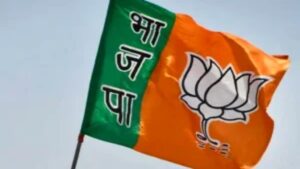Ayodhya Dhannipur Masjid: Ahmadullah Shah, the warrior of the revolution of 1857 … in whose identify a mosque could be inbuilt Ayodhya
4 min readHighlights: Considering the identify of the mosque to be constructed within the Dhannipur village of Ayodhya after Ahmadullah Shah, Ahmadullah Shah was a warrior of the revolution of 1857, the primary battle of independence towards the British was known as the Fahuladi Sher, the British had been the instance of Hindu-Muslim unity. The mosque to be constructed within the Dhannipur village of Ahmadullah Shah Faizabadi Ayodhya Ayodhya is being thought-about after the identify of the nice freedom fighter Ahmadullah Shah. Ahmadullah Shah was the warrior of the revolution of 1857 beneath whose management Awadh was received within the first battle of independence towards the British. The British additionally believed his valor to be ironic, so he was known as a stalwadi lion. It is alleged that his group energy was so sturdy that regardless of hundreds of thousands of efforts, the British weren’t capable of break the Hindu-Muslim unity. The information has been confirmed to our affiliate newspaper Times of India. However, the belief’s secretary Athar Hussain says that the ultimate choice will probably be introduced after discussions. Let us know who Ahmadullah Shah was – the Indian military was to start out on 31 May 1857 for India’s first freedom wrestle however its conclave was from Meerut on 10 May. However, the well-known e book Sunderlal, a well-known author within the English Raj in India, wrote that ‘the great preparations for the revolt had been in Awadh, it was not seen anyplace else. With the arrest of Bahadur Shah Zafar within the third week of September in 1857, the facility of Delhi got here to the British however Awadh continued to tackle the British till March the next 12 months. “Fouladi lion” used to name the British who took iron from British rule and Maulvi Ahmadullah Shah ‘Faizabadi’ was the largest identify amongst those that chewed the grains. His many names had been Maulvi Ahmadullah Shah Faizabadi alias Nakarshah alias Dankashah Faizabadi. It is alleged that every time he went out on an expedition, he used to play danka or nakkar in entrance of him. Because of this, Nakarshah or Dankashah was hooked up to his identify. Because of his bravery, the British used to name him ‘Fauladi Sher’. The historians of Hindu-Muslim unity tied with Rana of Rae Bareli say that if the British couldn’t break the Hindu-Muslim unity of Awadh in these days, then The credit score goes to Ahmadullah Shah. He together with Rana Venimadho Singh of Shankarpur, Rae Bareli strengthened the group energy of Hindu-Muslim. In these days, the maulvi additionally had the concept of making roti and lotus sticks as an invite to rise up. After consuming the rotis that got here from the rebels in a village or city, recent rotis had been made after consuming them and had been despatched to different villages or cities with lotuses. Eating loaves meant that they too had been included within the mutiny and had nothing to do with faith or caste. The British requested the cleric and his supporters to put down their arms in February 1857, earlier than the liberty wrestle. When the cleric didn’t pay attention, the British began giving in to temptation. When this didn’t occur, orders for his arrest had been issued. His recognition among the many folks was such that the Awadh police refused to just accept the order to arrest him. Then the British military got here and arrested on 19 February 1857. They had been tied in chains and pushed to town of Faizabad and sentenced to loss of life. The folks of Faizabad attacked in jail. On 8 June 1857, the folks of Faizabad metropolis and the insurgent Desi Army attacked the jail and rescued the Maulvi who was lodged there. Then everybody collectively selected this beloved chief as their head and fired cannons at his arrival. The Maulvi took command of the insurgent military and after liberating Faizabad from the British, made Raja Man Singh its ruler. He additionally had the concept of Hindu-Muslim unity behind it. The most worthy chief of the revolution in Lucknow, after this, the Maulvi revolved across the then Agra and Awadh provinces. Seeing the ability he launched within the siege of the Residency and the battle of Chinhat in Lucknow, historians have written that he was probably the most succesful chief of the revolution of Lucknow. It can also be mentioned that after the rebels had been weakened, the cleric requested them to undertake a method of partisan preventing. The British had stored a reward of fifty thousand rupees on January 15, 1858 when he was injured by a bullet however didn’t break the morale and confronted the British equally. After the autumn of Lucknow, the British had been stricken by making Shahjahanpur the middle of their actions. The British stored their heads value fifty thousand rupees. Under this greed, the brother of a treacherous king of the princely state of Puja in Shahjahanpur district was shot and killed on June 15, 1858. As a sufferer of his betrayal, the Maulvi Raja had gone right here to hunt assist in the combat towards the British. It is alleged that the king lower the pinnacle of the cleric and wrapped it in a handkerchief and handed it over to the Collector of Shahjahanpur. The collector hanged the pinnacle on the gate of Shahjahanpur Kotwali. Some patriots took the lifetime of the Maulvi’s head from there and buried it with full reverence and reverence at one finish of the close by Lodipur village. Ahmadullah Shah, after whose identify the mosque will probably be inbuilt Ayodhya.






